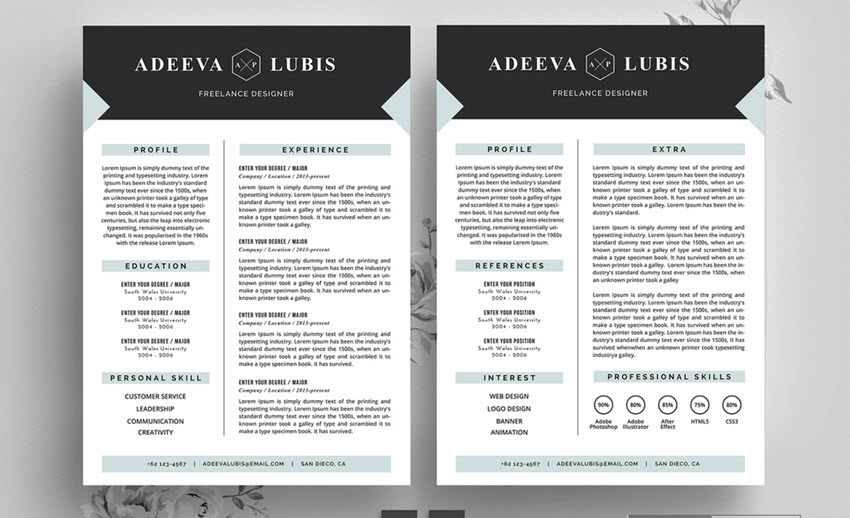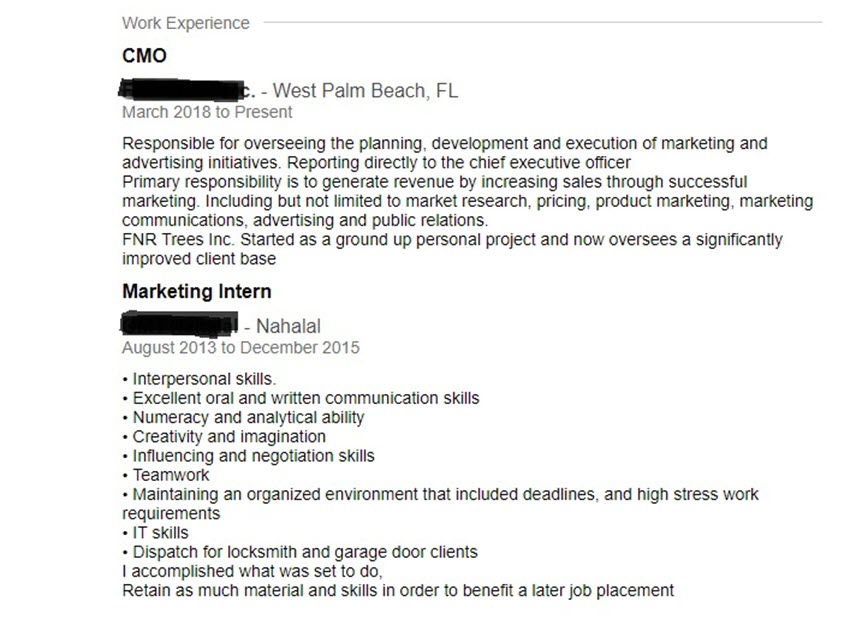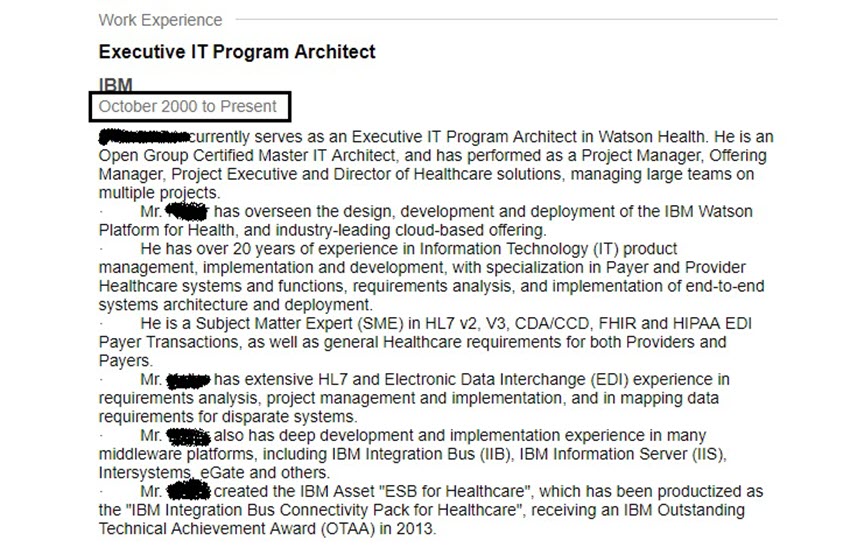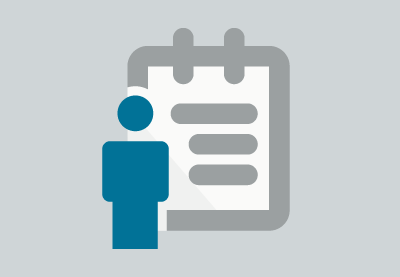Recruiters review thousands of resumes every month. They’re tired of reading the same information, told in different ways, over and over.
Because of this sheer volume, they've mastered what makes a good resume tick. They also know all too well what gets a bad resume sent to the trash.

In this article, I’ll focus on good vs bad resume strategies, and what you can do to fix bad resumes and make them good. You can also make sure that you're using a good resume design by using a professional resume template from Envato Elements or GraphicRiver.
Top 15 Resume Mistakes to Avoid
If you're a job hunter, watch out for these common resume mistakes that are sure to get your resume trashed:
1. Title Inflation
Have you ever seen a 20-something with a CEO, CFO, CMO or any manner of executive job title in their resume? It’s pretty common these days with the proliferation of startups. Such titles aren't always impressive though.
“In our industry, we call this title inflation. Being a “CEO” of an unincorporated company with zero revenue and zero employees is a clear sign that we should either throw your resume away, or take a far more critical look at it,” says Matthew Mercuri, Director of Human Resources at Dupray.
Yes, having your own startup or business shows an entrepreneurial spirit, but for many fresh graduates and young professionals an executive title is just a poor attempt to hide lack of professional employment.
“Working as a busboy at a local restaurant usually impresses HR professionals much more” continues Mercuri.
2. Lack of Career Progression for Long-Term Employment
Some employees are just loyal to the company. Others are lucky enough to get promoted many times with one employer. If this were the case for you, how would you put it in your resume?
Would you write this as one entry–company name and employment duration—with multiple secondary points detailing your career? This is the common strategy many applicants follow and it’s not working in their favor.
Marissa L Klein, EVP and Founder of Choice Fashion & Media, says, “People who have been with a company for a long time tend to make this mistake – they list the employer and the duration but there’s no emphasis on their promotions or career progression.”
For example, if you worked one company from 1999 until the present time, you should put it at the top of your work history in bold font. Break down promotions underneath in a smaller bold font, followed by a choice list of your achievements and responsibilities in each role.
3. Poor Layout and Design
A good resume should have a logical progression and clear layout so whoever reads it quickly gets an overview your career. A professional resume template, such as the one pictured below, can help you avoid layout and design problems.

Julie Fantom, HR & Operations Director at Wilson Fields, warns applicants “against using colored paper and clip art.”
Discover more resume tips, to avoid poor resume design, or use a resume template, like the one above, so you start with a great design:
 Resumes20+ Creative Resume CV Design Tips (With Template Examples for 2020)
Resumes20+ Creative Resume CV Design Tips (With Template Examples for 2020) Resumes30+ Best Infographic Resume CV Templates (Creative Examples for 2020)
Resumes30+ Best Infographic Resume CV Templates (Creative Examples for 2020)
4. Referencing Employers You Had Issues With
Some candidates think they can get away with referencing employers they had bad blood with.
It’s a different issue if several employees got laid off. But if you got singled out because of absenteeism, poor performance, or misconduct, don’t include it on your resume. It’s not worth the risk.
5. Responsibilities, Not Achievements
One of the most common resume errors is a candidate’s failure to demonstrate on-the-job achievements. They just describe their responsibilities but not why those were important, or how it affected the company.
Listed below one of the job titles was ‘Handled an account base of clients.’ Not too impressive, right?
You can easily tell the difference between a bad resume vs good resume just from how the bullet points are written.
You can find more examples of good resume vs bad resume achievements in the tutorial below. It'll show you how to write your achievements effectively, so recruiters don't ignore your hard work:
6. Sloppiness
Food stains and those coffee rings are common signs of bad resumes. This document serves as the first example of your work and sets the bar for what potential employers can expect of you.
“I received a hand-delivered resume from a presentable job seeker. After opening it, I found the paper wrinkled and stained even though the envelope was clean. I didn’t even bother reading it because it showed an extreme lack of attention to detail”, says Garrett Collins of Nu’u SEO.
Using a clean and well-designed resume stationery for your application will also make your resume look more presentable compared to plain white resumes.
7. Too Academic
“I’ve come across resumes that looked purely academic. Candidates listed the courses they’ve taken, their GPA, and the honors they received—all impressive. But there's no mention of any practical skills. Not even how their academic experience translates to their chosen field”, says Monica Eaton-Cardone, Co-founder and COO of Chargebacks911.
It’s okay to have no experience, everyone has to start somewhere. Not all academic resumes are bad resumes, but resumes focused only on your student life won't get you a job. It doesn’t show your potential, such as your skills, work ethic, and type of employee you’re going to be.
Fresh graduate? Follow this guide on creating your first-ever resume the right way:
8. Irrelevant Skills or Basic Skills Everyone Expects You to Have
Touch typing, using MS Word, and searching the web are all basic skills people expect you to know. Don’t waste space mentioning them.
Are you scared that recruiters might miss your resume on their database, unless you list it all? Don’t be. I can’t imagine a job where a recruiter will search ‘touch typing’ or ‘proficient in MS Office.’
Recruiters search for technical and job specific keywords like “Graphic Design using Adobe Photoshop,” or “Making Pivot Tables in MS Excel.” Leave off the generic stuff, but don’t leave out the special programs and equipment used in your profession.
Read this tutorial to see examples of good and bad resumes, specifically how the applicant's skills are listed in them:
9. Unnecessary Information About Previous Employers
“Even if you feel like you’re being helpful, there’s no need to list the exact date you started (e.g. July 1 2014), supervisor’s name, their contact number, previous salary, and reason for leaving,” says Lavie Margolin, Former Career Counselor and Founder of Lion Club Job Search.
Including your reason for leaving an employer might cost you an interview. If you’re not careful, the recruiter might jump to the wrong conclusions—that you’re a job hopper, have work performance issues, or don’t play along with others. Who’s going to defend you or address their questions when this happens? Leave all this for the interview, and only provide this information when they ask.
Stating your previous salary is always a gamble. You may not get interviewed if your previous salary is higher than expected. But if it’s lower than their job offer, then you could be leaving money on the table.
10. Spelling and Grammar Errors
“Attention to detail,” and “Keen eye for observation” are soft-skills listed in many resumes. But how do you prove this?
Tara Rist, HR Manager at Policy Expert, shares one way to prove you don’t have this skill:
“There’s nothing worse than a candidate claiming ‘attention to detail’ as a skill, only to find their resume covered with errors.”
She’s right. Relying on a word processor’s grammar and spell will earn you a one-way ticket to that recruiter's hall of bad resume examples. The same goes for online tools, such as Hemmingway or Grammarly. While both are helpful, they’re not fool-proof. Have someone else go over your resume, or read it out loud to detect potential errors.

One way to make sure you've got a good resume is to use a template. Here's a tutorial to help you learn how to customize a resume template in Microsoft Word:
11. Too Much Information Burying Important Details
“It’s rare for recruiters to read a resume cover to cover if they can’t find at least one glowing accomplishment related to the job vacancy”, says Jason Carney, HR Director for WorkSmart Systems.
A good resume isn’t padded with too many details that make it hard for recruiters to qualify you as a candidate. Remove irrelevant or outdated details about your career.
“Think of a good resume as a short ad, not a biography,” continues Carney.
12. Using a String of Keywords
Relevant keywords related to your job title and industry play a huge role in your resume. Just don’t overdo it and make sure it makes sense.
“Don’t pile a long list of keywords on a resume without a clear strategy or reason,” says Resume Writer Debra Ann Mathews.
Below is an excerpt from a resume Matthews provided, where you'll see a mistake common in bad resumes. It's supposed to be a list of skills, but reads more like a list of equipment.
“Areas of expertise / equipment include:
aseptic tanks, Oakes mixer, versators, autoclave cleaning & sanitation, CIP / SIP sterilization, powder blending, blend tanks, bagging machine, separators, liquid compounding, Urscdhell cutters, Fitz mill/press and Hollman presses, distillation and extractions, 5000- and 6000-lb. blenders, colloid mills, centrifuge machines, 1000-gallon percolators, chemical reactors, open and vacuum kettles, 300-gallon liquid verterseductors.
Computers: Plc computers, HMI computer system, electronic batching,
MAPS for AS400
Learn more effective resume writing techniques:
13. Personal Information
“Don’t include personal information, such as age, gender, or nationality.” says Lauren Fach, Digital Media Maven at University of Advancing Technology. Even if the recruiter doesn’t want to judge or discriminate, you’re making it easy for them to do so.
I went through a soft-skills training with a previous employer a few years ago. One of the participants was a recruiter from our HR department. During our break, another trainee asked what they thought of the resumes they receive.
To which a recruiter answered, “They read pretty much the same, so it’s boring. But we often get a laugh passing around resumes with ugly pictures.”
Bias or discrimination pertaining to personal information is a bit more subtle. Professional recruiters and HR managers don’t let negative bias cloud their judgement. But bringing up unnecessary details upfront causes them to stop and think about what you wrote.
Hesitations Like These Might Come Up:
“Wait, what does that mean?”
“How will this affect team dynamics?”
“Do I need to worry about poor communication skills because English is just a second language for this candidate?”
“Will there be schedule conflicts or should I expect a lot of leave requests because of this candidate’s religion?”
All these subtle biases can surface and make a recruiter question your qualifications. Freelancers competing in a global market experience this, too.
Learn more about how to make a professional resume:
14. Using Clichés
Bad resumes are full of clichés. Your resume will stand out better if you don't use the same lame words recruiters have already seen in a hundred other resumes.
For instance, instead of writing that you're "results oriented" or a "Go getter," you should just write about what you accomplished in your last role.
"Creative" and "Innovative" are clichés now, too. Write about a problem you solved in a creative manner, and that'll serve as a better proof of your out-of-the-box thinking capacity.
Check out this article to how action words affect good and bad resume examples:
15. Not Including Social Proof
Social proof is one of the best ways to show proof of excellence in your work. Like all other parts of your job application, there are good and bad resume examples when it comes to social proof.
Jessica Holbrook-Hernandez, CEO of Great Resumes Fast, suggests you, "avoid unclear statements like 'Kevin did great work he did for our project” when using social proof in your resume.'
Mention a specific achievement instead: 'Kevin takes the time to go the extra mile for his clients. His excellent client management landed a $5M contract with a competitor-aligned company.'"
A short recommendation or quote is a nice way to brag about yourself without actually bragging about yourself. Instead, you’re relying on the words of others to support your claims, giving employers the much-needed proof they're seeking.
Using recommendations is an easy way to turn bad resumes into good resumes, so don't be afraid to use them. Just ask your supervisor and co-workers for a recommendation.
Good Resumes vs Bad Resumes - With Example Comparisons
To avoid making bad resumes, examples can help. Here are some examples that further illustrate the characteristics of good vs bad resumes discussed above.
1. Good and Bad Resume Examples - Job Title Inflation
Below are two bad resume examples from Indeed where the candidate used title inflation to make their job history seem more impressive:

How can a marketing intern suddenly become a CMO? It's possible, but unlikely. Here's the second of our bad resume examples:

This job disguised what was part of their course's curriculum as a job. While the candidate is candid that it's just a school exercise, some recruiters may still feel misled by the job title. After all, if this was a school activity, there's a big chance the title CMO wasn't earned through promotion or hard work.
2. Good Resume vs Bad Resume Layout - Long Tenure
Below are good and bad resume examples that illustrate how distinguishing your career progression impacts your application.
Here's a good resume example from Executive Resume Writer Michelle Riklan, where the resume clearly shows the candidate's job growth from director to vice president:

Now let's look at a bad resume example of job tenure. The resume below is for an applicant with 20 years of experience as an executive IT professional:

This resume doesn't give the enough credit, showing one of the typical mistakes in bad resume examples. The resume:
- Compressed 20 years of work into one job entry
- Deprive the recruiter of a way to make sense of the candidate's career acceleration
- The applicant is a subject matter expert and has numerous skills and certifications, but it's impossible for the recruiter to tell if the candidate gained those experience in the last 10 years or just last year.
3. Social Proof in Good and Bad Resume Examples
For many job opportunities, social proof is an important element.
Social proof isn't limited to recommendations from others. Holbrook-Hernandez says, "a well-written quote from yourself can add a great touch on a resume and help your personality and values shine through."
Below is an example comparison between a bad resume vs a good resume that uses a personal quote as social proof:

This applicant mentioned their time in the army, and used it as a social proof of their ability to make quick decisions and think outside the box—a trait commonly expected from people with military background. Now that culture fit is a hot topic among recruiters, using social proof like this is becoming quite effective.
Here's one of the many bad resume examples out there that uses a first-person quote. It's not a good use of social proof because it doesn't mention anything unique or impressive about the applicant, and it doesn't reveal anything about their personality or values.

Here's an example of social proof you're probably more familiar with: a recommendation from a supervisor.

Basic, Yet Still Important
We’ve all seen examples of bad resumes. It’s important to study the issues you’ve learned about in this article so that your resume avoids these mistakes.
Some of these resume mistakes may seem elementary to you. But since recruiters still complain about them, you can bet these mistakes are still rampant. You might be guilty of these resume faux pas too.
Use this article as a checklist and go over your resume right now. Compare it with the good and bad resume examples in this list to make sure they don't contain any of these mistakes. It'll only take a few minutes, but it could spell the difference between an interview, or your application getting thrown in the bin for mistakes you could've easily corrected.
Also, avoid creating badly resumes with professional resume templates from Envato Elements or GraphicRiver. Why not download a template today to upgrade your resume's look?
Editorial Note: This content was originally published in January of 2019. We're sharing it again because our editors have determined that this information is still accurate and relevant.
.jpg)






No comments:
Post a Comment